 |
 |
| Korean J Intern Med > Volume 10(1); 1995 > Article |
|
Abstract
A 32-year-old male patient, diagnosed as a hepatic solitary angiomyolipoma post-operatively, is reported. The tumor was well definedly inhomogenous fat density mass on ultrasonography, computerzied tomography (CT) and magnetic resonance imaging(MRI). The lesion was hypervascular on arteriography. The diagnosis was confirmed by an extended right lobectomy and histological examination.
Angiomyolipoma of the liver is an extremely rare benign tumor. This tumor is not uncommon in the kidney, and many cases of renal angiomyolipoma are associated with tuberous sclerosis. But most hepatic angiomyolipoma was not associated with tuberous sclerosis and only 33 cases had been reported in the English literature before 19931–20). Several authors have recently suggested that diagnosis may be established with relative certainty by recognition of the characteristic features of this tumor using imaging modalities such as ultrasonography, computed tomography, magnetic resonance imaging and angiography3,6,13). But because this tumor is generally regarded as a mesenchymal hamartoma consisting of blood vessels, smooth muscle and fatty tissue, various features were shown according to the imaging method employed. So its definite diagnosis requires excision and histologic confirmation. This paper shows a case of huge solitary 25 cm sized angiomyolipoma of the liver diagnosed post-operatively. which express smooth muscle actin as well as melanoma markers such as HMB-45 and S-100
A 32-year-old male presented with a 3 month history of right upper quadrant abdominal discomfort and indigestion These symptoms had occurred especially after exercise such as a foot-ball game. physical examination revealed enlarged liver to 10 cm below the right costal margin. There was no stigmata or family history of tuberous sclerosis The liver function tests revealed an elevated alkaline phosphatase of 277 IU/L(normal <237) and gamma glutamyl transpeptidase of 80 IU/L(normal <50). Serum aminotransferase activities were within normal limits. Serum HBsAg, HBsAb and anti-HCV were negative. Serum alpha fetoprotein was also within normal limit. Ultrasonography demonstrated a huge hyperechoic round mass with a well defined smooth contour and several small hypoechoic foci in it(Fig. 1).
There was also a posterior echo attenuation by the mass. CT showed an enhanced round mass with multiple irregular fat dense areas and sharply defined margin(Fig. 2). Hepatic MRI revealed inhomogenous well-capsulated solid mass occupying the entire right lobe. On T1 weighted image, the mass showed hyper-and isointensity lesion compared to normal liver, and bright signal intensity was shown on T2 weighted image. On dynamic study, the mass was demonstrated to be inhomogenous and showed prolonged enhancement, which pattern seemed to be atypical for hemangioma(Fig. 3). Celiac angiography demonstrated a large hypervascular tumor without feeding vessels or nodular staining. Displacement and stretching of the intragepatic portal veins were demonstrated on the post-arterial portogram(Fig. 4).
With the diagnosis of atypical hemangioma of the liver, an exploratory laparotomy was per formed and extended right lobectomy was carried out. The resected specimen was measured 29.0 × 22.0 × 6.5cm and weighed 2,500g(Fig. 5). The cut surface of the specimen showed 25.0 × 20.0cm soft, dark reddish and partly yellowish tumor completely surrounded by capsule(Fig. 6). Histologically, the tumor composed of adipose tissue intermingled with areas of epithelioid smooth muscle cells. Multiple thick walled vessels, many of which are abnormal arteries, as well as capillaries and veins, are noted throughout. There are also scattered foci of extramedullary hematopoiesis(Fig. 7). On immunohistochemistry, smooth muscle actin as well as melanoma markers such as HMB-45 and S-100 were expressed.
With the exception of hemangiomas, benign angiomyolipoma of the liver is an extremely rare tumor, especially when compared with that of the kidney. To our knowledge, only 33 cases have been reported in English literature1–20).
In most of these cases, diagnosis was made post-operatively, except for a few cases, since a pre-operative diagnosis, especially differentiation from malignant tumor, was difficult1–15). Since this lesion is benign in nature, it would be preferrable to differentiate it from a malignant vascular tumor unless surgery is inevitable. Its diagnosis requires evaluation by means of imaging modalities and histologic confirmation. But, by reviewing literature, it was very difficult to diagnose hepatic angiomyolipoma by imaging methods only, even though the radiological characteristics of this tumor are well known. This is because of various problems associated with the diagnostic imaging of hepatic angiomyolipoma. With ultrasonography, hepatic angiomyolipoma can not be differentiated from hemangioma, focal nodular hyperplasia, focal fatty changes, some hepatocellular carcinomas containing fatty changes or other hyperechoic masses24,25). Although the CT attenuation value is thought to be diagnostically useful3,7), the relative proportions of the various tissue components vary in this tumor, it is well known that the fat content of hepatic angiomyolipoma varies considerably, ranging from less than 10% to more than 50%4). Therefore, the CT attenuation value also varies, and it may be difficult to detect the three components-blood vessels, smoth muscle and fatty tissue by CT scan. The MRI appearance of hepatic angiomyolipoma is a hyperintense mass on T1-weighted spin-echo pulse sequence. Hyperintense imaging of the lesion on both T1 and T2 weighted sequences in this case suggested that they contained a fatty component9,13,19). But its finding is not sufficient to make a confirmative diagnosis. Angiography, as well as CT arteriography and MRI, is also useful in the recognition of the vascular componet within the nodule, and in differentiating it from cavernous hemangioma, but is still non-specific.
Particularly, it is very difficult to diagnose focal lesion using imaging modalities when it is small. On the other hand, ultrasonographically guided fine needle biopsy(FNAB) is generally considered to be an important procedure for rapid diagnosis of angiomyolipoma20–23). The distinctive FNAB findings can make a definite diagnosis without laparotomy for tissue diagnosis. Histologically the tumor has three or four componets, namely blood vessels, smooth muscle, fat and hematopoietic tissue. However, these elements are variable in proportion and distribution. In the largest series, described by Goodman and Ishak4), the smooth muscle component is the most prominent, consisting of both spindle and epithelioid cells. The epithelioid cells were polygonal or rounded and were found singly, in clusters or in sheets. Immunohistologically, these cells expressed HMB-45 in the central condensed cytoplasm and actin in a perimenbranous fashion26–29). The adipose tissue also reactive for S-100 protein as in this case presented12). The size of hepatic angiomyolipoma in the literature was variable from 1 cm to 18cm in diameter. This case may be the single largest one ever reported in the literature. Although all the resected hepatic angiomyolipoma have been cured and there is no evidence of malignant potential, the lesion requires surgical excision if symptoms referrable to the tumor are present and there is a risk of spontaneous rupture due to its location on the surface of the liver.
Acknowledgments
The authors thank Dr. K. G. Ishak and his collegues in the Department of Pathology, AFIP, Washington, D. C., for their pathological confirmation and special stains.
Fig. 1.
US: A huge hyperechoic round mass with well-defined swooth contour and several small hypoechoic foci in it.
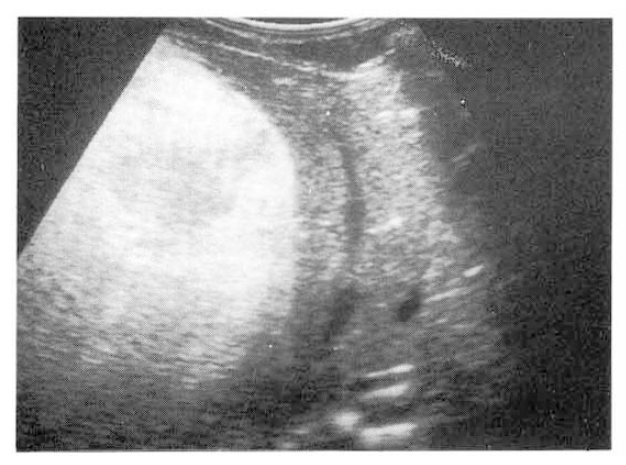
Fig. 2.
CT: An enhanced round mass with multiple irregular fat dense areas and sharply defined margin.
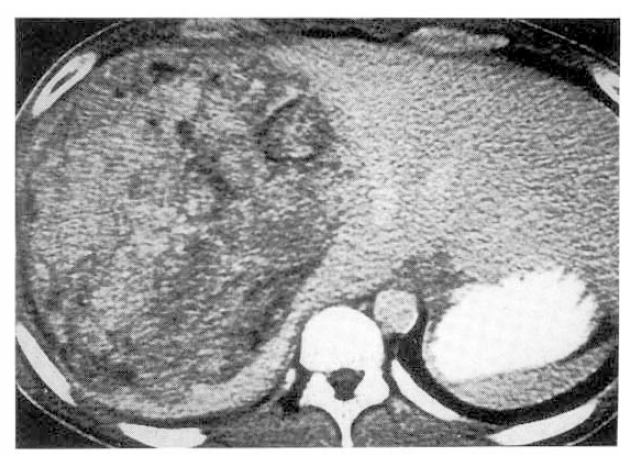
Fig. 3.
MRI: On T1 weighted image, the mass shows hyper-and isodensity lesion compared to normal liver, but on T2 weighted image it shows bright signal intensity.
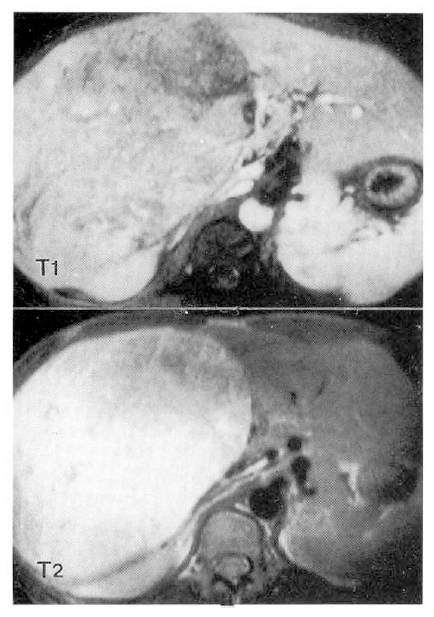
Fig. 4.
Angio graphy: celiac angiography demonstrated a large hyper-vascular tumor and dilated hepatic artery and vascular pooling in the lower lateral portion.
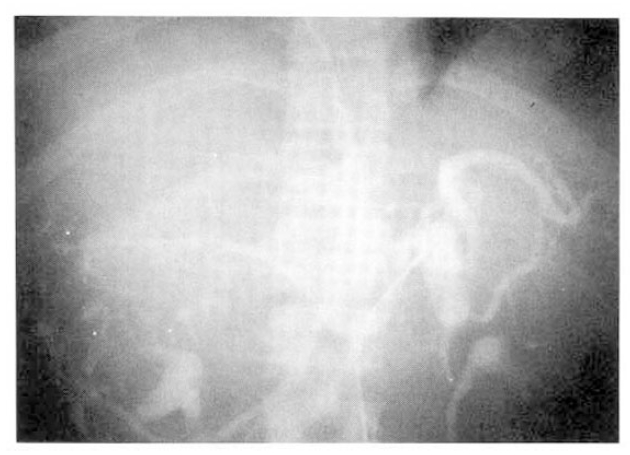
REFERENCES
1. Ishak KG. Mesenchymal tumors of the liver. In: Okuda K, Peters RL, eds. Hepatocellular Carcinoma. John Wiley & Sons, New York: 247. 1976.
6. Blumgart RL, Payne M, Rhodes H. Case report: Angiomyolipoma of the liver. Clin Radiol 38:329. 1987.


7. Takayasu K, Shima Y, Muramatsu Y, Moriyama N, Yamada T, Makuuchi M, Hirohashi S. Imaging characteristics of large lipoma and angiomyolipoma of the liver. Cancer 59:916. 1987.


8. Miyahara M, Kobayashi M, Tada I, Okada K, Sato K, Kim YI, Hiraoka T, Yokoyama S. Giant hepatic angiomyolipoma simuling focal nodular hyperplasia. Jpn J Surg 18:346. 1988.


9. Fobbe F, Hamm B, Schwarting R. Angiomyo-lipoma of the liver: CT, MR, and ultrasound imaging. J Comput Assist Tomogr 12:658. 1988.


10. Naito M, Yamamura F, Takahashi K, Iwasaki S, Mochinaga M. Hepatic angiomyolipoma. A case report with review of the literature. Acta Pathol Jpn 38:799. 1988.


11. Okada K, Yokoyama S, Nakayama I, Tada I, Kobyashi M. An electron microscopic study of hepatic angiomyolipoma. Acta Pathol Jpn 39:743. 1989.


12. Ohmori T, Arita N, Uraga N, Tabei R, Yamamoto M, Kataoka M, Hamamoto K. Giant hepatic angiomyolipoma. Histopathology 15:540. 1989.


13. Robinson JD, Edward GG, Haller OJ, Cohen HL. Hepatic angiomyolipoma in tuberous sclerosis. J Ultrasound Med 8:575. 1989.


14. Kristal H, Sperber F. Hepatic angiomyolipoma in a tuberous sclerosis patient. Isr J Med Sci 25:412. 1989.

16. Nguyen GK, Catzavelos C. Solitary angiomyolipoma of the liver: Report of a case initially examined by fine needle aspiration biopsy. Acta Cytobgica 34:201. 1990.
17. Weeks DA, Malott RL, Arnesen M, Zuppan C, Aitken D, Mierau G. Hepatic angiomyolipoma with striated granules and positivity with melanoma specific antibody (HMB-45): A report of two cases. Uitrastruct Pathol 15:563. 1991.

18. Linton P, Ahn WS, Schwarz M, Miller CM, Thung SN. Angiomyolipoma of the liver: immunohistochemical study of a case. Liver 11:158. 1991.


19. Kudo M, Okuno T, Tomits S, Kajiwara T, Shirane H, Usuki N, Todo A. Hepatic angiomyolipoma preoperatively diagnosed by imaging. J Gastroenterol Hepatol 8:483. 1993.


20. Yamada N, Shinzawa H, Makino N, Matsuhashi T, Itasaka S, Takahshi t, Fuyama S. Small angiomyolipoma of the liver diagnosed by fine-needle aspiration biopsy under ultrasound guidance. J Gastroenterol hepatol 8:495. 1993.


21. Sbolli G, Fornari F, Civardi G, Stasi MD, Cavanna L, Buscarini E, Buscarini L. Role of ultrasound guided fine needle aspiration biopsy in the diagnosis of hepatocellular carcinoma. Gut 31:1303. 1990.



22. Fornari F, Civardi G, Cavanna L, Rossi S, Buscarini E, Stasi MD, Sbolli G, Buscarini L. Ultrasonically guided fine needle aspiration biopsy: A highly diagnostic procedure for hepatic tumors. Am J Gastroenterol 85:1009. 1990.

23. Matsuhashi T, Yamada N, Ukai K, Ishibashi M, Shinzawa H, Takahashi T. Usefulness of “Y-needle” in ultrasound-guided aspiration biopsy of hepatic tumors. Jpn J Med Ultrasonics 19(Suppl. I):401. 1992;(in Japanese with Engl, abstr.).
24. Yamada N, Shinzawa H, Ukai K, Matsuhashi T, Takahashi T. Comparative study of ultrasonographic findings for hepatocellular carcinoma and hepatic hemangioma-prospective study using the diagnostic criteria for liver tumors of the Japanese society of ultrasonics in medicine. Jpn J Med Ultrasonics 18(Supple. II):117. 1991;(in Japanese with Engl. abstr).
25. Yoshikawa J, Matsui O, Takashima T, Sugiura H, Katayama K, Nishida Y, Tsuji M. Focal fatty change of the liver adjacent to the falciform ligament: CT and sonographic findings in five surgically confirmed cases. AJR 149:491. 1987.


26. Weeks DA, Malott RL, Arnesen M, Zuppan C, Aitken D, Mierau G. Hepatic angiomyolipoma with striated granules and positvity with melanoma-specific antibody (HMB-45): A report of two cases. Ultrastruc Pathol 11:158. 1991.
27. Pea M, Bonetti F, Zamboni G, Martignoni G, Riva M, Colombari R, Mombello A, Bonzanini M, Scarpa A, Ghimenton C, Fiore-Donati L. Melanocyte-marker-HMB-45 is regularly expressed in angiomyolipoma of the kidney. Pathology 23:185. 1991.


28. Pea M, Bonetti F, Zamboni G, Martignoni G, Giore-Donati L. Clear cell tumor and angiomyolipoma (Letter). Am J Surg Pathol 23:185. 1991.
-
METRICS

- Related articles
-
A solitary necrotic nodule of the liver2013 July;28(4)
A case of papillary fibroelastoma in the left ventricle2013 January;28(1)
A Case of Granular Cell Tumor of the Trachea2007 June;22(2)
A Case of Primary Plasmacytoma of Lymph Nodes2005 June;20(2)
A Case of Agenesis of the Right Lobe of the Liver1993 July;8(2)



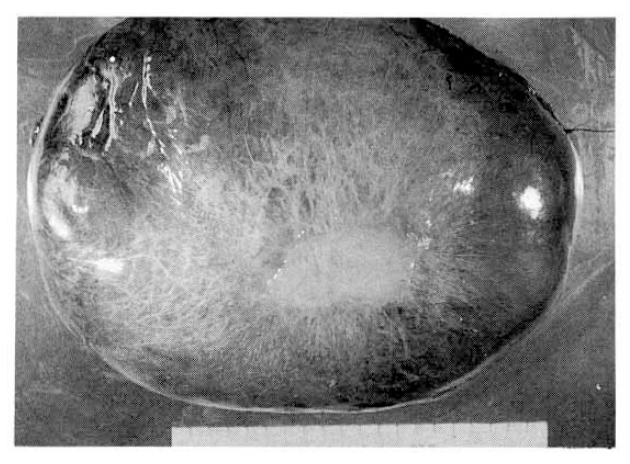
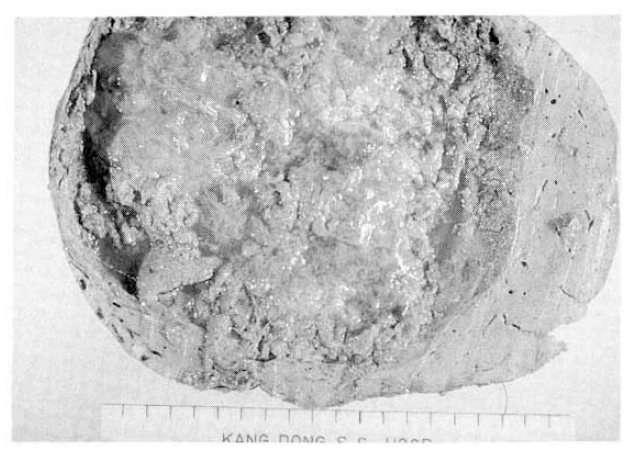
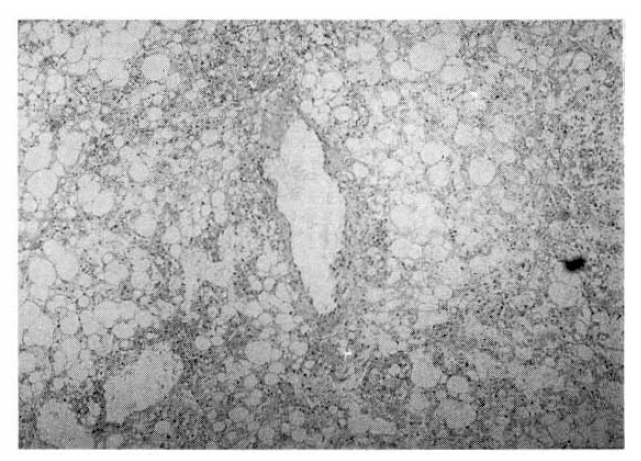
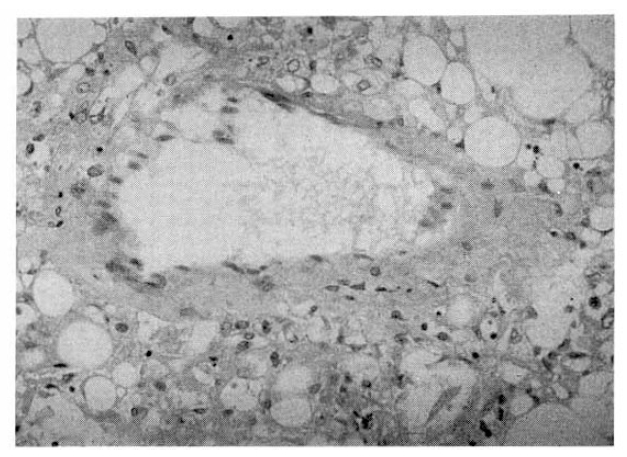
 PDF Links
PDF Links PubReader
PubReader ePub Link
ePub Link Full text via DOI
Full text via DOI Download Citation
Download Citation Print
Print


